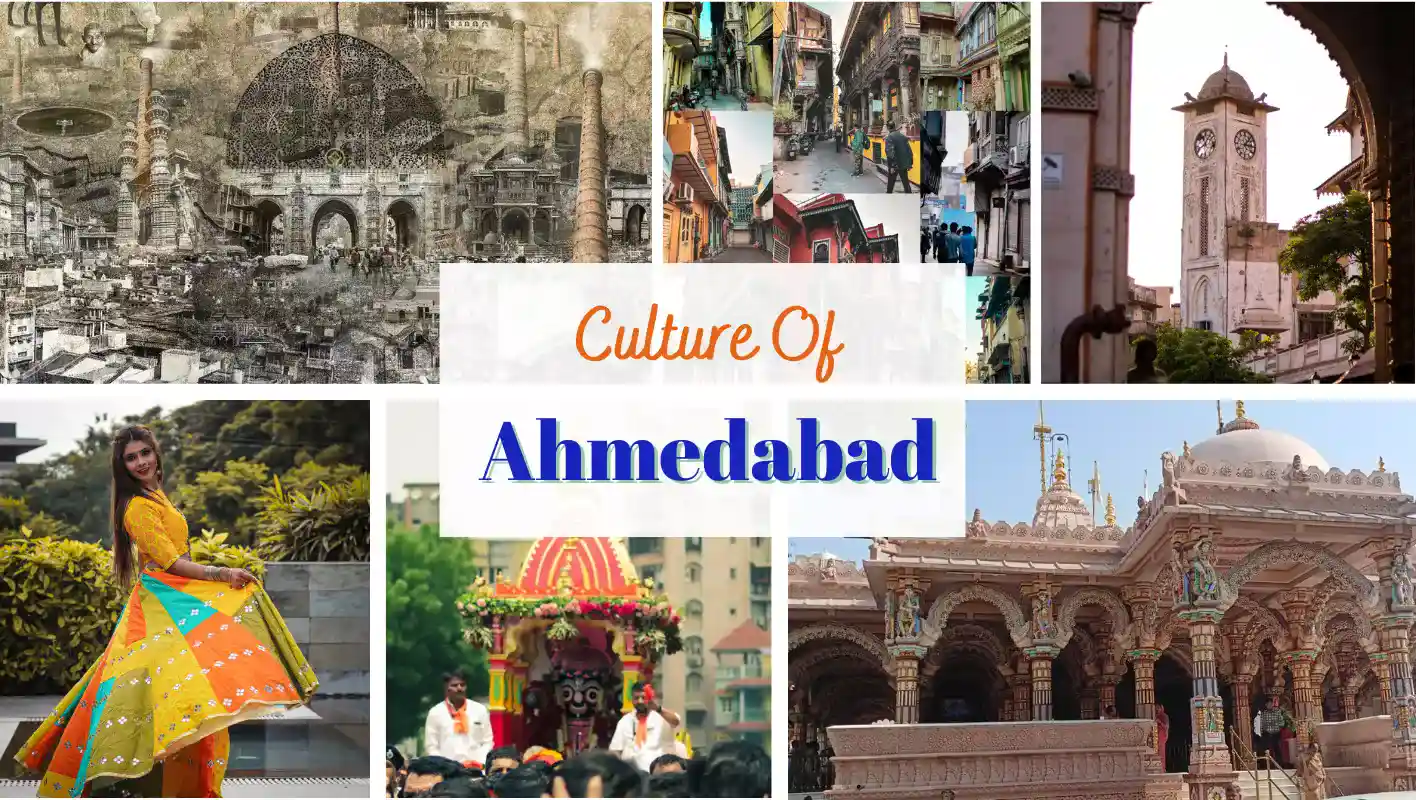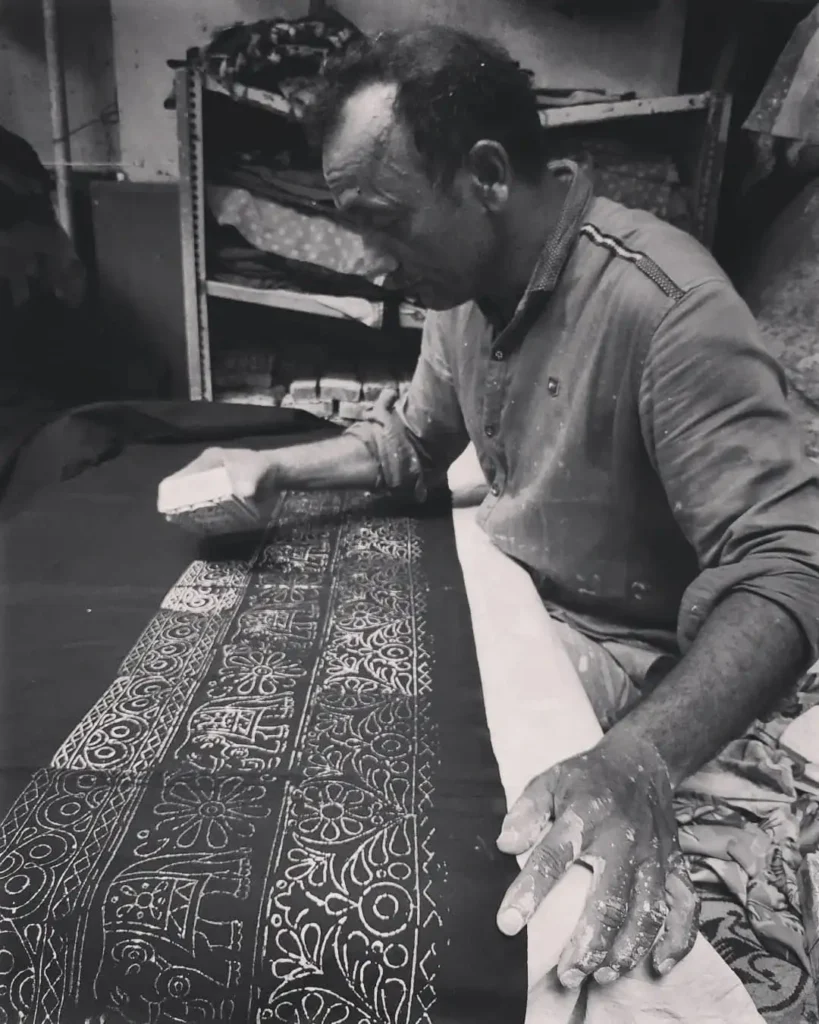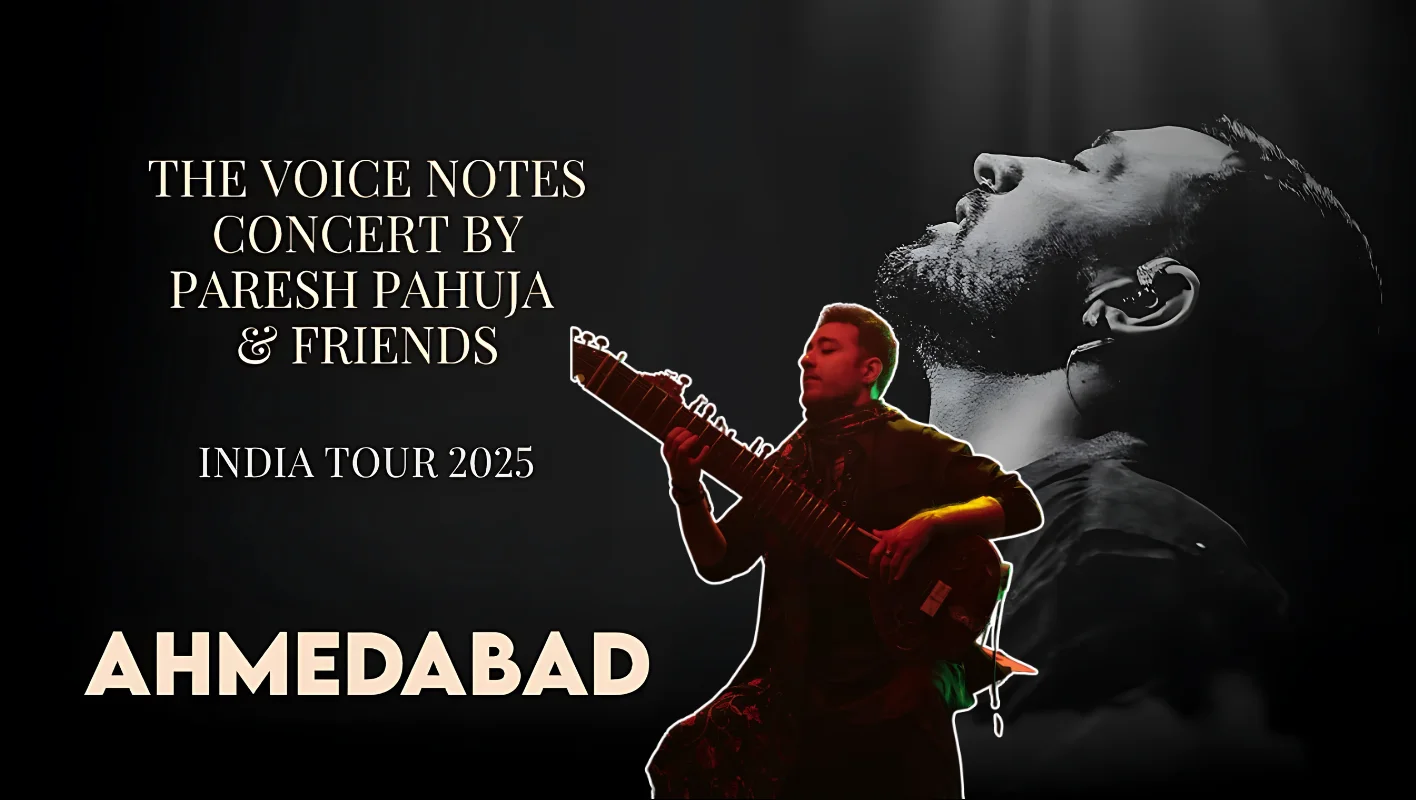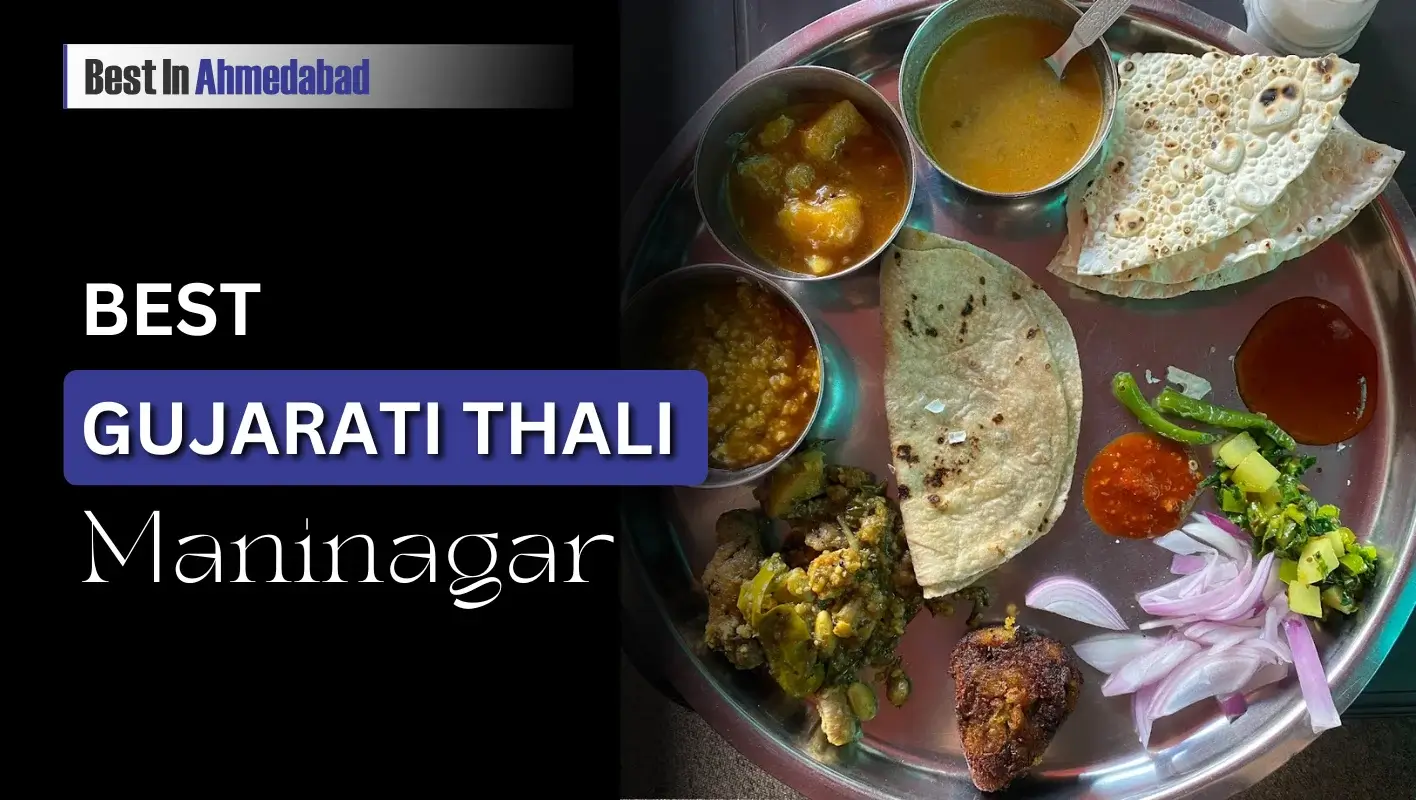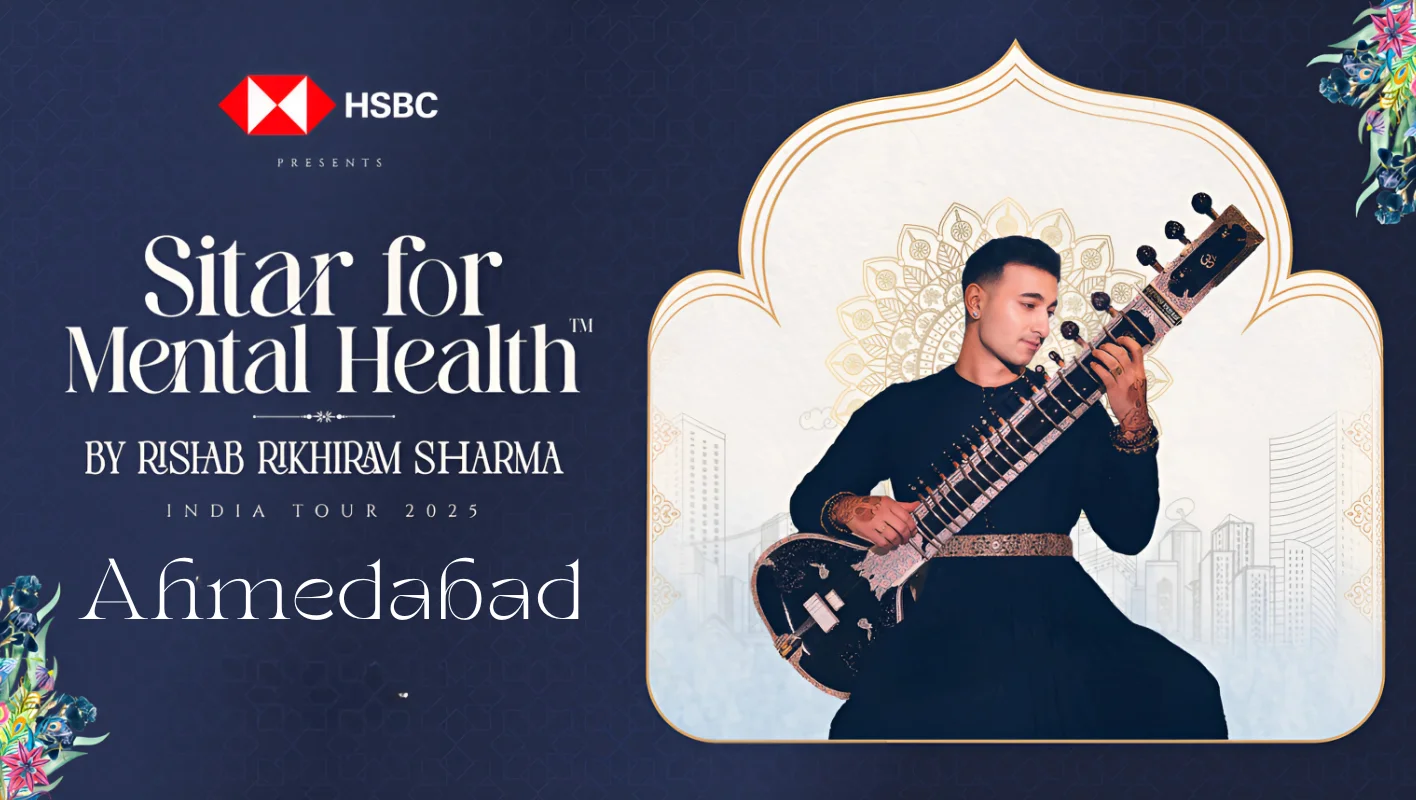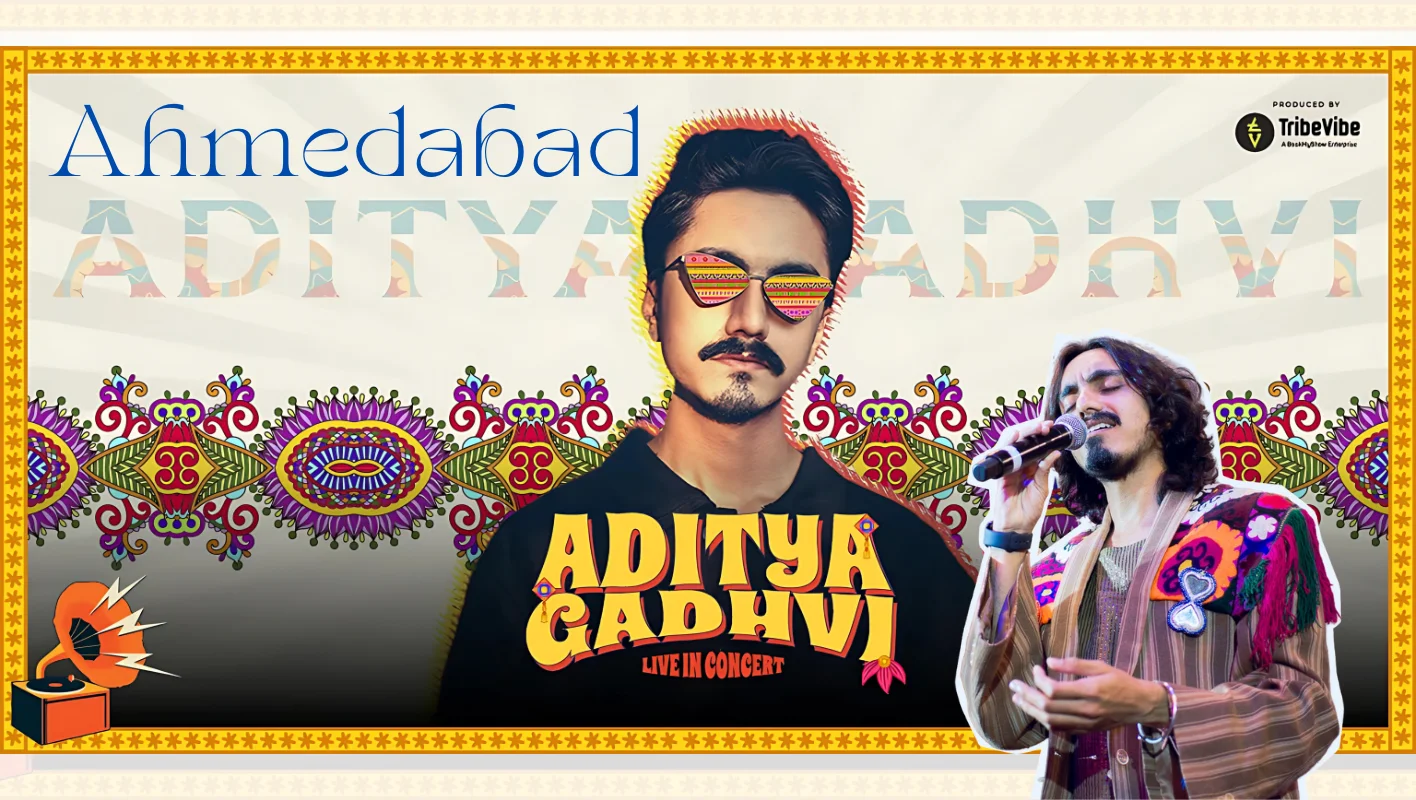Ahmedabad is a city rich in history, culture, and tradition. The people here know for their warm hospitality and their love for arts, handicrafts, and delicious food. Ahmedabad is home to a vibrant and diverse community that takes pride in its cultural heritage. Ahmedabad welcomes the future with its traditional attire, language, festivals, and business ventures.
In this blog, we will explore different aspects of Ahmedabad’s culture, people, and way of life. This includes its rich heritage, cultural tourism, arts, handicrafts, fashion trends, symbols, and cuisine.
Table of Contents
People and life in Ahmedabad
According to the 2011 census, Ahmedabad is one of the most populated cities in India with over 5.5 million people living in it. Currently, it is about to reach nearly 8 million. The city is home to people from all parts of India and the world, making it a cosmopolitan place. Most people in Ahmedabad practice Hinduism, but there are also Muslims, Jains, and Christians. Since it is a multi-religious city, the people here celebrate festivals of all religions with great enthusiasm.
Ahmedabad is a vibrant city with a rich cultural heritage. The people here have a mix of old and new lifestyles. They know to be hardworking and enterprising. People of Ahmedabad value family traditions and maintain close relations with their relatives. They follow the norms of a joint family and respect their elders. Festivals and events celebrate here with lots of color and fun.
Heritage Cultural Tour in Ahmedabad
A heritage cultural tour of Ahmedabad is a must-do activity for anyone who wants to experience the essence of the city’s heritage and culture.
The tour usually begins with a visit to the old city, which is home to some of the most iconic heritage structures in Ahmedabad. The old town is a maze of narrow streets and colorful bazaars. You can witness local artisans crafting beautiful handcrafted items such as embroidered textiles, metalwork, and pottery.
One of the most famous landmarks in the old city is the Jama Masjid, one of the largest mosques in India. It is a splendid example of Islamic architecture with its intricate carvings and grand domes. Another important monument is the Bhadra Fort, it is a museum showcasing the history, art and culture of the city.
During a heritage cultural tour in Ahmedabad, a visit to the Sabarmati Ashram is a must. This was the home of Mahatma Gandhi during India’s fight for independence. The ashram, now transformed into a museum. Which displays Gandhi’s personal belongings like his spectacles, spinning wheel (charkha), and other cherished items.
The tour also takes you to the Calico Museum of Textiles. It is famous for its impressive collection of Indian textiles, including ancient saris, shawls, and tapestries. The museum also presents demonstrations of textile printing, weaving, and dyeing.
For those interested in architecture, visiting the Sidi Sayyed Mosque is a must. The mosque is famous for its intricate stonework. which considers one of the finest examples of Indo-Islamic architecture.
Art of Ahmedabad
Ahmedabad knows as the cultural capital of Gujarat and is home to a wide range of traditional art forms. Here I will share with you about the traditional arts of Ahmedabad.
–> Traditional Art Forms
Ahmedabad has a long history of traditional arts, some of which have been passed down for generations. These include embroidery, mirror work, bandhani, Kutchi work, and block printing. Let us know about all these in detail.
1. Embroidery
Embroidery is a cherished traditional art in Ahmedabad, practiced throughout the city. The city is famous for its beautiful embroidery work on fabrics like silk, cotton, and muslin. The embroidery work of Ahmedabad knows for its intricate designs, patterns, and vibrant colors. The city is also famous for its “zari” embroidery, which involves the use of metallic threads to create stunning designs. The INIFD Gurukul Design Institute based in Ahmedabad is working towards taking Indian embroidery forward.
2. Mirror Work
Mirror Work is another traditional art form practiced in Ahmedabad. It involves the use of small mirrors or “Abhalas” to create intricate designs on fabrics such as cotton, silk, and georgette. The mirror work of Ahmedabad knows for its beautiful patterns and bright colors. Law Garden Night Market is very famous for buying mirror work clothes in Ahmedabad. People buy things like Chaniyacholi, Lehenga, Bandhani saree, and Dhoti in the festival of Navratri from here.
3. Bandhani Textiles
Bandhani is a traditional tie-dye art. It involves tying small sections of cloth with thread and then dyeing the cloth in vibrant colors. The bonded sections resist the dye, creating beautiful patterns and designs. Ahmedabad knows for its Bandhani textiles, which use to make sarees, dupattas, and other traditional wear. Bandhej is the best place to buy Bandhani in Ahmedabad.
4. Kutchi Work
Kutchi work is a form of embroidery that originated in the Kutch region of Gujarat. It involves intricate needlework on fabrics such as silk, cotton, and velvet. Ahmedabad is a centre for Kutchi work. You can find beautiful Kutchi embroidery on sarees, blouses, and other clothes. An NGO named Shrujan does the work of supporting and promoting this art in Ahmedabad. You can visit its store to purchase Kachhi work apparel, bags, and home furnishings.
5. Block Printing:
Block printing is a technique for printing designs on fabric using carved wooden blocks. Ahmedabad is home to several block printing workshops. Where artisans create beautiful and intricate designs on fabrics. It is also famous for its intricate traditional designs that paste on blocks by artisan families. These prints call ‘Saudagiri’ prints because the ‘Saudagars’ or merchants gather at fairs, markets or ‘haats’ to sell their printed cloth to the common people as well as royalty.
–> Art Galleries
The city has several art galleries and museums, including
The Calico Museum of Textiles
The Calico Museum of Textiles is a premier textile museum in India. It showcases the history and evolution of textile art in India, with a focus on Gujarat. The museum has an impressive collection of rare textiles, including sarees, shawls, and fabrics.
Lalbhai Dalpatbhai Museum
The Lalbhai Dalpatbhai Museum is a museum of ancient Indian art and artifacts. It houses a collection of ancient sculptures, pottery, and other artifacts from various parts of India. The museum is a must-visit for anyone interested in Indian history and art.
Handicrafts
Ahmedabad is also famous for its handicrafts, which create by skilled artisans. Some of the handicrafts that you can find in Ahmedabad are:
Pottery
The famous “Matkis” or earthen pots, which use for storing water, are made by many artisans in Ahmedabad. The city is also known for its terracotta work, which includes decorative items, idols, and figurines of gods and goddesses.
Woodcarving
The art of woodcarving is also practiced in Ahmedabad. Various artisans in the city make beautiful wooden handicrafts, such as toys, furniture, and decorative items. You can see its intricate carvings on the wooden doors and windows of our traditional Gujarati houses.
Metalwork
Ahmedabad is also famous for its metalwork. Skilled artisans create beautiful brass and copper items, including utensils, lamps, and decorative items.
Leatherwork
Leatherwork is another popular handicraft in Ahmedabad. The city’s skilled artisans create beautiful leather products, including bags, belts, and shoes.
Street Art
Ahmedabad is also famous for its street art scene. Graffiti and murals adorn the city’s walls, showcasing the work of local and international artists. The city also hosts an annual street art festival called “Ahmedabad Walls”. Which invites artists from all over the world to showcase their work.
Papier Mache
Papier mache is a handicraft that involves creating objects by layering paper with glue. Ahmedabad is home to several papier mache artisans. Who create beautiful decorative items, including masks, figurines, and vases.
Ahmedabad Language
The city knows for its rich culture and diverse linguistic heritage. Ahmedabad has been a melting pot of different cultures and languages over the years. This has contributed to the development of a unique mix of languages in the city.
The official language of Ahmedabad is Gujarati, which is spoken by the local people. It is a language that is native to the state of Gujarat and is part of the Indo-Aryan language family. Gujarati is also the official language of the state of Gujarat, and it is spoken by millions of people around the world.
Apart from Gujarati, several other languages are spoken in Ahmedabad. Hindi, which is the most widely spoken language in India, is also spoken in the city. English is also spoken by a significant portion of the population, especially in business and educational institutions.
There are also several other languages that are spoken by smaller communities in Ahmedabad. These include Urdu, Sindhi, Marwari, and Punjabi. These languages are mainly spoken by communities that have migrated to Ahmedabad from other parts of India.
Fashion trends
Ahmedabad has become a hub of the fashion industry in recent years, with a large number of designers and fashion brands. Here are some of the latest fashion trends in Ahmedabad that you can explore:
1). Traditional wear with a modern twist:
Ahmedabad is known for its traditional clothing, such as the famous Chaniya Choli and Bandhani sarees. But, modern designers are now adding a contemporary twist to these traditional outfits, making them more versatile and appealing to a wider audience.
2). Fusion wear:
Ahmedabad has a unique fashion scene with a mix of cultures and communities that blends traditional Indian wear with Western styles. Fusion wear, such as Indo-Western dresses, is gaining popularity among the fashion-forward youth of the city.
3). Sustainable fashion:
Ahmedabad is also witnessing a growing interest in sustainable fashion. Designers and brands are incorporating eco-friendly fabrics and techniques into their collections. Consumers are becoming more aware of the impact their clothing choices have on the environment.
4). Accessorising:
Accessories play a crucial role in completing an outfit, and Ahmedabad’s fashion culture is no exception. Statement jewellery, colourful scarves, and embroidered bags are just a few examples of accessories that are in vogue in the city.
Symbol of Ahmedabad
The Sidi Saiyyed Jalli is a beautiful latticed stone window that is the unofficial symbol of Ahmedabad. It locates in the Sidi Saiyyed Mosque and showcases the city’s rich cultural heritage through its intricate carvings.
This ancient artifact shows incredible skill from ancient times. Its beautiful design has influenced artists and designers worldwide. Sidi Saiyyed Jalli represents a magnificent and mystical beauty that showcases the rich cultural heritage of Ahmedabad. It’s a must-visit attraction for anyone in the city.
Pol/street culture of Ahmedabad
The Pol culture of Ahmedabad refers to the unique street culture and architecture of the old city. A Pol is a narrow street with houses on either side, which were once used to protect from external threats.
Today, these Pol streets are known for their lively atmosphere, street food, and traditional handicrafts sold by local artisans. Ahmedabad’s Pol culture is a vital part of the city’s heritage and a must-see for anyone who wants to immerse themselves in its lively street scene.
Sports culture
Ahmedabad has a rich sports culture, with a special focus on cricket. The city has given many famous cricketers including Parthiv Patel and Jasprit Bumrah. Ahmedabad has the Narendra Modi Stadium, which is among the world’s biggest cricket stadiums. It has hosted many famous international matches. Apart from cricket, there is also a growing interest in football, volleyball, and badminton in the city.
There are several sports academies and training centers in the city for young athletes. Ahmedabad’s sporting culture is an integral part of the city’s identity, and it continues to grow and evolve over time.
Festivals & Event Culture of Ahmedabad
Ahmedabad is well-known for its lively festivals and events that happen all year round. The most prominent festival in Ahmedabad is Navratri, a nine-day-long celebration of dance, music, and culture. During this festival, the entire city comes alive with people dressed in colorful traditional attires performing traditional Garba (Dandiya dances). Another big festival in Ahmedabad is Uttarayan, celebrated on January 14th. During this festival, the sky of the city adorns with kites of various shapes and sizes.
Ahmedabad also plays host to several cultural events. Which include the International Kite Festival, the Rath Yatra, and the Ahmedabad Heritage Festival. The city’s event culture attracts tourists from around the world. The government and private organizations work together to support and protect cultural events.
Cuisines of Ahmedabad
The food culture of Ahmedabad is a delicious mix of traditional Gujarati cuisine and modern international flavours. The city’s famous Gujarati Thali is a must-try, with a variety of dishes showcasing the region’s rich culinary heritage. Along with the traditional cuisine, the street food of Ahmedabad is a foodie’s paradise.
Business Culture of Ahmedabad
Ahmedabad has a rich business culture with a history of entrepreneurship and innovation. The city knows for its textile industry, and several major textile mills locate in the city. Apart from textiles, Ahmedabad has a growing pharmaceutical industry in the city.
Ahmedabad’s business culture knows for its entrepreneurial spirit and innovation. The city has seen the flourishing of many small and medium-sized enterprises. The government has taken significant steps to promote entrepreneurship in the city. They have taken initiatives such as the Startup India program and the Vibrant Gujarat Summit. Ahmedabad’s business culture mirrors its strong entrepreneurial spirit and drives to achieve success. Which makes it a great destination for those interested in business and entrepreneurship.
Before You Go…
Let’s take advantage of our comprehensive Ahmedabad tourist guide, which showcases the finest attractions and highlights the must-do activities when visiting this vibrant city. By referring to our guide, you can make the most of your time in Ahmedabad and create unforgettable memories. Whether you are interested in exploring historical sites, immersing yourself in rich cultural experiences, or indulging in delectable local cuisine, our guide offers valuable insights to enhance your travel experience.
FAQs- Culture of Ahmedabad
Q.1) Why is Ahmedabad called a heritage city?
Ahmedabad calls a heritage city because of its rich cultural and historical importance. The city has a long history dating back to the 11th century. It has been ruled by several dynasties including the Solankis, the Mughals, and the British. The city has several historical sites, including the Sabarmati Ashram, Sidi Sayyid Mosque, and Bhadra Fort. Which are recognized as UNESCO World Heritage Sites.
Q.2) What is the pol culture of Ahmedabad?
Pol culture refers to the unique architectural style of old neighborhoods in Ahmedabad, characterized by narrow streets and traditional houses. Houses in Pol are built in clusters around a central courtyard, and the streets are lined with houses that have intricate wooden façades and ornate carvings. The Pols of Ahmedabad are an important part of the city’s heritage and a popular tourist attraction.

